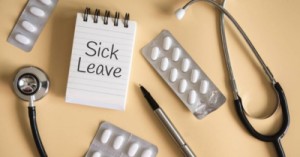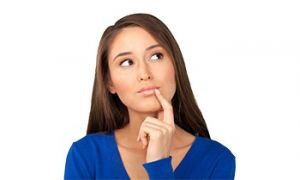Within an early childhood setting, throughout the day, children experience many transitions such as transitions that occur between activities or routines. The following article provides information on Transitions Between Activities, Supporting Transitions Between Activities, Transition Songs and Chants and more.
Transitions Between Activities
Transitions require young children to put forth great amounts of effort, not only physically, but emotionally, socially, and cognitively, across all areas of development.
- During the transition time, children often spend much time waiting (e.g., waiting until everyone has finished their snack).
- Some children (and adults) have stressful and frustrating experiences during transitions between activities (e.g., children arguing over who took out what toys and should put them away; children not knowing where to put certain
toys when they are done with them) - Skills such as cleaning up toys and lining up may reduce transition times and may lead to more time for children to become engaged in learning activities.
Supporting Transitions Between Activities
Children transition better when they are prepared: They know what is about to change, they know what they will need to do.
Strategies to support transitions include:
- Plan your daily schedule to include the minimal number of transition times possible.
- Consider what the children and Educators will do during these times (e.g., which Educator is responsible for greeting the children and who will begin looking at books on the carpet with children?).
- Prepare environments that support transitions - Consider how environments can be arranged as well as what materials in the environment will support transitions.
- Use visual cues - Post on the wall somewhere convenient to show children their daily routine. Get them involved by sticking the pictures with velcro and getting the child to peel them off each time they finish a task.
- Prepare for changes in advance - When you help a child transition between activities, make sure you have their attention, with eye contact, then use a calm firm voice to let them know when the change is coming. Say things like ‘Lunch time is in 10 minutes”.
- Give constant updates - Repeat the same short sentence you used earlier, e.g. “Lunchtime in 10 minutes”, then “lunchtime in five minutes” and so on. When time’s up, let children know with a firm command. Providing a bridge between the activities will help to ease the stress at moving from one to the other.
During The Transition
- Sing songs, play word or guessing games, recite rhymes, or do finger plays with children so that the time passes more quickly when they have to wait for long periods of time for new activities to begin.
- Plan a gradual increase or decrease in the level of activity (e.g., the outdoor play followed by snack) and a good balance of active and quiet play (e.g., centre time followed by story time)
- Allow children adequate time to finish projects or activities so they do not become frustrated by activities ending too soon
- Plan something for those children who finish an activity quickly so they are not waiting without something to do (e.g., if some children finish cleaning up and get to the large group quickly, might they look at books while waiting for other children to finish cleaning up?)
- Allow children to move individually from one area to another area when they complete an activity (e.g., as children finish snack, they are encouraged to go to the carpet and choose a book; as children finish putting away their coats and backpacks, they are encouraged to get a puzzle).
- Teach children to help others (e.g., have children move as partners from one activity to another or ask one child to help another child gather his/her backpack).
- Help children self-monitor during transitions (e.g., children can be asked to think about how quietly or quickly they moved from one
activity to another).
After The Transition
- Provide positive attention or feedback to children during AND following smooth transitions (e.g., when children pick up toys without much prompting, tell them this shows how well they take care of their “things” and how much you appreciate their working independently).
- Give very specific positive feedback after transitions (e.g., “Anna and Maria did a great job cleaning up the block area and moving to the carpet.”).
Transition Songs and Chants
Transition songs will help children get from one activity or place to another in a playful, positive manner.
Here are some transition songs to get you started:
Brown Bear
Brown bear, brown bear, what do you see? (everyone sings this to child holding the bear)
I see ________ looking at me! (child sings about an object or person he/she sees)
Acka Backa Soda Cracker
Acka-backa soda cracker, acka-backa boo!
Acka-backa soda cracker, pass to you!
This rhythmic chant can be used to pass instruments or other objects at circle time. It can also be used with a beanbag to line up or choose a centre at choice time. The teacher tosses the beanbag to a child on the last word “you,” and that child gets up. If not using instruments, children can try a pattern of clapping and then patting legs while chanting.
The Clock on the Wall
The clock on the wall says it’s time to stop,
Time to stop, time to stop!
The clock on the wall says it’s time to stop.
It’s time for circle time.
Change Circle to Lunch or other activity.
Colour Chant
Red, red, is the colour I see, if you’re wearing red then show it to me, Stand up, turn around, show us your red, then walk on down!
I am Ready
I am ready (children echo)
My eyes look front (children echo)
My hands are by my sides, (children echo)
My mouth is smiling! (children echo) (or “my mouth says ‘shhh’”)
Tune – “Frère Jacques”
Jump Up and Down
Mariah and Michael, jump up and down, turn all around, touch the ground!
Mariah and Michael, jump up and down, now walk to wash your hands.
Use children’s names and change “now walk to wash your hands” to other activity as needed, e.g.. “now tell us your choice”
Let’s Sit Down
Let’s sit down while we sing, down, down, down, down, down, down, down, down.
This helps children stay focused when transitioning from standing to sitting.
Please Stand Up
If your name is Sara, please stand up,
If your name is Justin, please stand up,
If your name is Ryan, please stand up,
And walk to the sink.
Change “sink” to “line” or wherever you want the children to go.
Sleeves Up
Sleeves up, sleeves up, way up high,
First we’ll wash and then we’ll dry.
Tune - “Twinkle, Twinkle Little Star
Sticky Icky Bubble Gum
Sticky icky bubble Gum,
Chewing’s not the only fun!
Sticky mess, sticky mess, stuck like glue,
Sticky mess, sticky mess, stuck on you!
(Oooooooh, pop!)
Pat/clap pattern throughout song, and children choose a place where the gum is stuck on their body; everyone “unsticks” the gum from that body part on.
Stop, Look and Listen
Stop, look and listen.
Hands up, hands up, way up high,
Listen and I’ll tell you why.
Two Little Hands
Two little hands go clap, clap, clap,
Two little feet go tap, tap, tap,
One little body turns around and
Slowly, quietly sits right down.
We’re on our Way
We’re on our way to wash our hands
We’re on our way to wash our hands.
We’re going to use some soap and water,
We’re on our way to wash our hands.
Willoby Walloby Woo
Willoughby, Walloughby Woo,
an elephant sat on you,
Willoughby, walloughby we,
An elephant sat on me!
Repeat, using rhyming words of each child’s name, e.g. Willoughby, walloughby Wustin, An elephant sat on Justin, Willoughby, walloughby Wyan, An elephant sat on Ryan.
Further Reading
Creating Smooth Transitions In Early Childhood Settings - The following article provides information on Theories and Transitions, Different Types Of Transitions, Benefits Of Planning Transitions With Families and Children and more.
Child Behaviour: Transitions - The following provides strategies for dealing with toddlers' and preschoolers' difficult behaviour during transitions.
Transition Songs for Children - Transition songs to sing with children.
References:
Understanding Transitions, PSU Education
Helping Children Transition Between Activities, A Curious Journey
Helping Children
Make Transitions Between Activities, Centre on the Social and Emotional Foundations For Early Learning







 As an Educator in Australia, your pay rate falls under the Children’s Services Award 2010. This award states the minimum amount that an employer can
As an Educator in Australia, your pay rate falls under the Children’s Services Award 2010. This award states the minimum amount that an employer can When working as a qualified Early Childhood Teacher (with a university degree) within a service, your rate of pay will come from the Educational Services
When working as a qualified Early Childhood Teacher (with a university degree) within a service, your rate of pay will come from the Educational Services When working as a Diploma Qualified Educator your pay rate is from the Children's Services Award 2010. This Award states your minimum rate of pay
When working as a Diploma Qualified Educator your pay rate is from the Children's Services Award 2010. This Award states your minimum rate of pay When working as a Cert 3 Qualified Educator, your pay rate is from the Children's Services Award 2010. This Award states your minimum rate of
When working as a Cert 3 Qualified Educator, your pay rate is from the Children's Services Award 2010. This Award states your minimum rate of Educational Leaders play a crucial role in their early childhood service by ensuring that the educational program aligns with best practices and supports the holistic
Educational Leaders play a crucial role in their early childhood service by ensuring that the educational program aligns with best practices and supports the holistic In early childhood education and care, ratios are more than a technicality—they are a frontline safeguard. Every child deserves responsive supervision, emotional connection, and developmental
In early childhood education and care, ratios are more than a technicality—they are a frontline safeguard. Every child deserves responsive supervision, emotional connection, and developmental With the new national child safety reforms kicking in on 1 September 2025, early childhood services like yours have a real opportunity to lead the
With the new national child safety reforms kicking in on 1 September 2025, early childhood services like yours have a real opportunity to lead the Here’s a comprehensive Mobile Phone and Smart Watch Policy tailored for early childhood education and care (ECEC) services in Australia, aligned with the latest 2025
Here’s a comprehensive Mobile Phone and Smart Watch Policy tailored for early childhood education and care (ECEC) services in Australia, aligned with the latest 2025 The Sea of Fish Challenge is a national initiative that invites children, educators, families, and communities to create and display fish artworks as a symbol
The Sea of Fish Challenge is a national initiative that invites children, educators, families, and communities to create and display fish artworks as a symbol Across the early childhood education and care sector, educators are sounding the alarm: current staffing ratios are insufficient to deliver safe, meaningful, and developmentally appropriate
Across the early childhood education and care sector, educators are sounding the alarm: current staffing ratios are insufficient to deliver safe, meaningful, and developmentally appropriate


